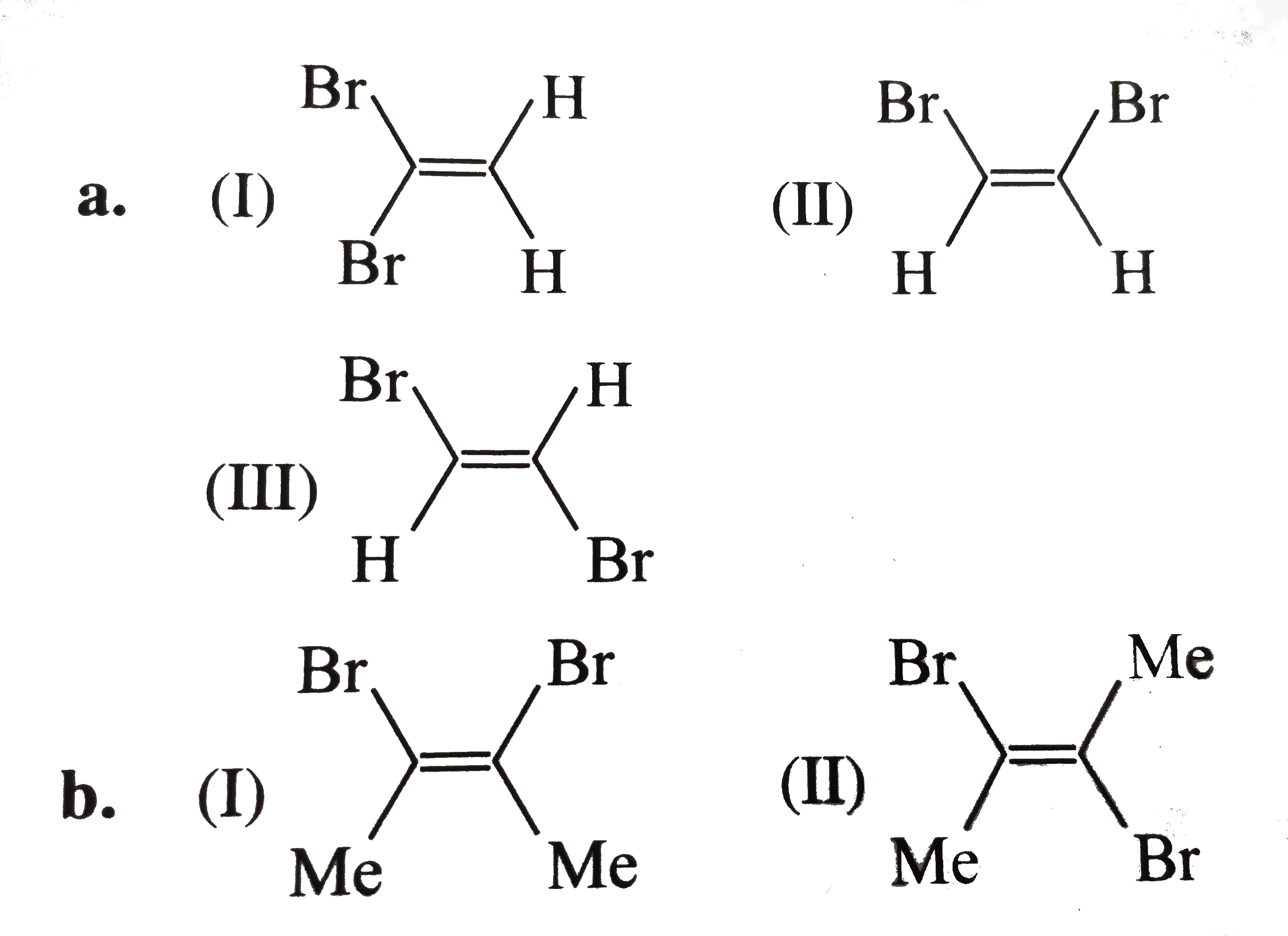Decreasing order of dipole moment in CHCl3, CCl4 & CH4 is –
The correct Answer is:A
To determine the decreasing order of dipole moments in CHCl3 (chloroform), CCl4 (carbon tetrachloride), and CH4 (methane), we can analyze the molecular structures and their symmetry.
1. Identify the Molecular Structures:
- CHCl3 (Chloroform): This molecule has one hydrogen atom and three chlorine atoms bonded to a central carbon atom. The structure is tetrahedral.
- CCl4 (Carbon Tetrachloride): This molecule has four chlorine atoms bonded to a central carbon atom, also forming a tetrahedral structure.
- CH4 (Methane): This molecule has four hydrogen atoms bonded to a central carbon atom, forming a tetrahedral structure.
2. Determine Hybridization:
- All three molecules (CHCl3, CCl4, and CH4) have a carbon atom that is sp³ hybridized, leading to a tetrahedral geometry.
3. Analyze Symmetry:
- CCl4: The molecule is symmetrical because all four substituents (Cl) are identical. The dipole moments from each C-Cl bond cancel each other out, resulting in a net dipole moment of 0.
- CH4: Similar to CCl4, methane is symmetrical with four identical hydrogen atoms. The dipole moments from each C-H bond also cancel out, resulting in a net dipole moment of 0.
- CHCl3: This molecule is not symmetrical due to the presence of one hydrogen atom and three chlorine atoms. The dipole moments from the C-Cl bonds do not cancel out with the C-H bond, leading to a net dipole moment that is greater than 0.
4. Compare the Dipole Moments:
- Since both CCl4 and CH4 have a dipole moment of 0, while CHCl3 has a positive dipole moment, we can conclude:
- Dipole Moment of CHCl3 > Dipole Moment of CCl4 = Dipole Moment of CH4 = 0.
5. Final Order:
- The decreasing order of dipole moments is:
- CHCl3 > CCl4 = CH4.
Conclusion:
The decreasing order of dipole moment in CHCl3, CCl4, and CH4 is:
CHCl3 > CCl4 = CH4.
- CHCl3 (Chloroform): This molecule has one hydrogen atom and three chlorine atoms bonded to a central carbon atom. The structure is tetrahedral.
- CCl4 (Carbon Tetrachloride): This molecule has four chlorine atoms bonded to a central carbon atom, also forming a tetrahedral structure.
- CH4 (Methane): This molecule has four hydrogen atoms bonded to a central carbon atom, forming a tetrahedral structure.
- All three molecules (CHCl3, CCl4, and CH4) have a carbon atom that is sp³ hybridized, leading to a tetrahedral geometry.
- CCl4: The molecule is symmetrical because all four substituents (Cl) are identical. The dipole moments from each C-Cl bond cancel each other out, resulting in a net dipole moment of 0.
- CH4: Similar to CCl4, methane is symmetrical with four identical hydrogen atoms. The dipole moments from each C-H bond also cancel out, resulting in a net dipole moment of 0.
- CHCl3: This molecule is not symmetrical due to the presence of one hydrogen atom and three chlorine atoms. The dipole moments from the C-Cl bonds do not cancel out with the C-H bond, leading to a net dipole moment that is greater than 0.
- Since both CCl4 and CH4 have a dipole moment of 0, while CHCl3 has a positive dipole moment, we can conclude:
- Dipole Moment of CHCl3 > Dipole Moment of CCl4 = Dipole Moment of CH4 = 0.
- The decreasing order of dipole moments is:
- CHCl3 > CCl4 = CH4.
The decreasing order of dipole moment in CHCl3, CCl4, and CH4 is:
CHCl3 > CCl4 = CH4.
Topper's Solved these Questions
Similar Questions
Correct order of dipole moment is
View SolutionThe correct order of dipole moment is :
View SolutionThe correct order of dipole moment is :
View SolutionGive the decreasing order of dipole moments of HF,HCI,HBr, and HI.
View SolutionThe correct order of the dipole moment is :
View SolutionThe decreasing order of dipole moment of the folliwng is:
I. CH3Cl, II. CH3Br, III. CH3F
View SolutionArrange the following compounds in decreasing order of dipole moment values Explain the order
(a) CBr4 , (b) CHBr3 , (c ) CH2Br2 , (d) CH3Br .
View SolutionArraange the following compounds in increasing order of dipole moment?
CH3CH2CH3.CH3CH2NH2,CH3CH2OH
View SolutionGive the decreasing order of net dipole moments of the following:

View SolutionCorrect dipole moment order is

View Solution
